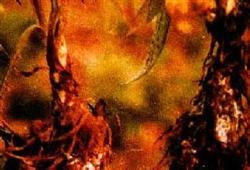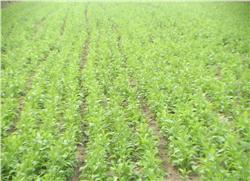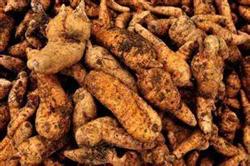Diseases and insect pests of Atractylodes macrocephala Koidz and their control techniques

(1) White silk disease is also known as "rotten sugar". In the high temperature and rainy season from April to June or August to September, especially in the soil with heavy clay and poor drainage, it was found that the white silk-like white hairs (the hyphae of half-known bacteria) gradually expanded from around the operation strain on the topsoil around the operation at the initial stage, covering the soil surface and soil gap. Millet and rice particles (sclerotia) were attached along the main root or detailed report along the main root or detailed report, and then gradually changed to yellowish and finally brown at 0.6-1cm off the soil surface, around the stalk and 16cm-20cm deep under the soil layer, milky white, then gradually turned yellowish and finally brown. when the disease was serious, the root of Atractylodes macrocephala rotted, the soil around the plant turned black, the smell was rotten, and spread quickly. Control methods: ① and Gramineae crop rotation. ② selected disease-free seeds and soaked the seeds with 1000 times solution of 50% bacillus. Before planting ③, the soil was treated with 15 kg pentachloronitrobenzene per hectare. ④ dug up the diseased plant in time and disinfected the disease hole with lime. ③ irrigated the disease area with 50% carbendazim or 50% methyl topiramate 1000 times. (2) Rhizoctonia solani is also called rotten stem blast. Seedling disease, early spring due to overcast and rain or soil consolidation, the disease is serious, the base of the injured seedlings is brown dry shrinkage depression, so that the seedlings fall down and die. Control method: ① soil disinfection, soil treatment with pentachloronitrobenzene per hectare before planting. During the onset of ②, the endemic area was irrigated with pentachloronitrobenzene 200x solution. (3) Iron leaf disease occurs on the leaves, and the leaves are iron-black. In the later stage, the center of the disease class is grayish white with small black spots. Control method: ① cleans up the field sanitation and burns the diseased leaves of residual plants. At the initial stage of the onset of ②, the patients were sprayed with 100 Bordeaux solution or 1000 times of 50% acetaminophen once every 10 days for 3 times. (4) Rust is also called yellow spot, with disease spots on the leaves, fusiform or nearly round, brown, with yellowish green halos. Yellow granules were produced at the spots of leaf back disease, and yellow powder appeared in the later stage of rupture. Control method: ① cleans the field and burns the diseased leaves of the residual plants. At the initial stage of the onset of ②, 97% rusty steel was sprayed with 300x liquid, or 0.2-0.3 Baumetu stone-sulfur mixture, once every 10 days for 2 times in a row. (5) Root rot, also known as dry rot, is a kind of half-known fungus in fungi, which harms the root and stem, makes the root and stem rot, and the vascular bundle system shows brown lesion. Control methods: ① and Gramineae rotation. ② was planted in a disease-free and robust plant, soaked in 1000 times of 50% bacilli for 3 minutes for 5 minutes, dried and seeded. During the onset of ③, 50% carbendazim or 50% methyl topiramate was used to irrigate the disease area. Dodder, also known as Rhizoma Scutellariae, is a parasitic seed plant, which occurs from the seeds of Atractylodes macrocephala Koidz. The disease was serious from July to August.
- Prev

New technology of high yield of Atractylodes macrocephala Koidz
Cultivation techniques for raising seedlings (1) A month before sowing, Atractylodes macrocephala Koidz turned over the soil, covered with weeds 30 cm thick, burned the soil for disinfection, prevented the occurrence of diseases and insect pests, and turned the grass ash into the soil after burning. If the soil is not burned, it can be turned over in the winter of the first year so that the soil can be fully weathered by freezing. Dirt.
- Next

Asexual Propagation technique of Gastrodia elata
The planting and cultivation technology of Gastrodia elata has good shape, high drying rate (3 jin fresh product dry 1 jin dry product) and excellent quality, but the price is three or four times higher than that of red Gastrodia elata and jute Gastrodia elata. The reason why the price of Gastrodia elata is high, but also because of artificial cultivation, or wild distribution of the area and quantity are very small. Therefore, manual.
Related
- Fuxing push coffee new agricultural production and marketing class: lack of small-scale processing plants
- Jujube rice field leisure farm deep ploughing Yilan for five years to create a space for organic food and play
- Nongyu Farm-A trial of organic papaya for brave women with advanced technology
- Four points for attention in the prevention and control of diseases and insect pests of edible fungi
- How to add nutrient solution to Edible Fungi
- Is there any good way to control edible fungus mites?
- Open Inoculation Technology of Edible Fungi
- Is there any clever way to use fertilizer for edible fungus in winter?
- What agents are used to kill the pathogens of edible fungi in the mushroom shed?
- Rapid drying of Edible Fungi

